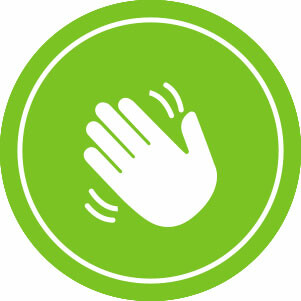
02.09.22 | Covid-19 Resources
The risk for unvaccinated greeters, ushers, and Communion stewards is high as most of their tasks do not allow for appropriate physical distancing and/or handling items that multiple people touch. (BWC Guidelines for Re-entering Well, p. 3)
Why?
As churches continue to take steps to ensure people’s safety and wellbeing, managing expectations is a vital part of reopening buildings and gathering well. Greeters, ushers and Communion stewards play an essential role in setting expectations and providing warm hospitality in the midst of this pandemic.
When?
Until CDC guidelines are revised.
Implementation Checklist
- Clearly mark or tape-off pews that are closed for physical distancing.
- If your situation warrants it, establish set routes for entering and exiting the building and sanctuary. Post clearly visible signs to inform parishioners of the new traffic flow. Orderly ways of entering and exiting the sanctuary and pews will increase safety and assist people in comfortably finding their place within the worship space.
- Recruit and train greeters, ushers, and Communion stewards who are not vulnerable to the virus. Training to include:
- Clear information about COVID-19 transmission and why it is important for everyone to adopt the following wellbeing protocols:
- Stay home if you or someone you are in contact with feels sick or has a temperature (to prevent the spread of the virus);
- Maintain six feet apart from others not in your immediate family or pod (to prevent the airborne spread of the virus among those who are symptom free);
- Wear a facemask when not alone or with your family or pod (to protect others);
- Do not touch your face, mouth, or eyes (to prevent the virus from entering your body); and
- Wash hands with soap and water for 20 seconds after using the toilet and use hand-sanitizer to clean hands after exiting the restroom or after touching other common surfaces (to kill the virus).
- Teach greeters, ushers, and Communion stewards how to wear masks properly:
- Cover both nose and mouth and secure a close fit around the face.
- Put masks on before leaving vehicles.
- Learn about the wellbeing guides and how they will be partnering with greeters and ushers. (See “Enforcing Necessary Health Policies Tip Sheet” for details.)
- Review the purpose of their service: to make people feel welcomed, seen, supported and safe. With purpose and the health guidelines in mind, walk through any replacement behaviors for your church. Here are some examples:
- Instead of reaching out to offer a welcome in the form of a handshake, elbow bump or hug, we will (wave, bow slightly, or _________) and say (“Welcome! It is great to see you!”)
- Instead of handing out bulletins, we will (project on wall/screen; email content; place bulletins on the seats with sanitized hands and masks on prior to people arriving; provide a recycling bin for people to use after worship while maintaining physical distancing)
- Instead of escorting people to their seat, we will (take positions around the sanctuary to direct people from a safe distance)
- Instead of distributing Communion elements in baskets or trays, or having people come forward to the Communion rail, we will follow the Communion Tip Sheet.
- Instead of passing an offering plate or having people process to place their offering in a basket, we will follow the Offering Tip Sheet. (Continue to ask people to give electronically to reduce the amount of paper that others must touch. We will guide others to place their offering in designated secure boxes in the sanctuary.)
- Think about where you will need to be positioned in the space to allow for proper sightlines, flow, and distancing. For many, this will mean standing back from doorways.
- Assist the congregation in making sure they have easy access to hand sanitizer, tissues, and, if someone has forgotten to bring one, a mask. The church’s Re-entry Task Force should set up and publicize a procedure to assist with the distribution and disposal of these items.
- In addition to general health guidelines signage, consider additional signage that will help participants feel comfortable and supported in any new behaviors. Keep the information brief and readable at a glance. If the church office does not have the equipment to make signs, investigate having them professionally printed.
